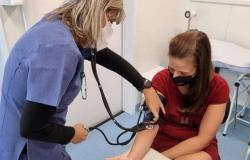Plastic can increase the risk of heart attack and stroke by up to 5 times: understand.
Plastic represents one of the biggest environmental concerns.
The main environmental concern related to the product is its slow decomposition. While other materials degrade more quickly, plastics can persist in the environment for hundreds or even thousands of years, accumulating in landfills, oceans, rivers and soil. This progressive accumulation of plastic waste creates widespread problems of pollution and environmental contamination. Currently, the annual production of plastics is 430 million tons, the majority of which are short-lived products that are quickly discarded. If current trends continue, the production of this waste is expected to triple by 2060, according to data from the UN’s annual report on plastic pollution.
Furthermore, the fragmentation of plastics into microplastics and plastic nanoparticles poses an additional threat to marine and terrestrial ecosystems.
You microplastics are small particles, smaller than 5 millimeters, of plastics. Already the nanoplastics they are even smaller pieces, so tiny that they can only be seen with microscopes. These tiny particles are easily ingested by aquatic and terrestrial organisms, leading to food contamination, bioaccumulation of toxins and the transfer of plastics into the food chain.
If until then our biggest concern was animal health and the risks to the food chain, in recent years, there has been a growing concern about the presence of microplastics and nanoparticles in the environment and their impact on human health.
Recent studies have discovered the presence of these micro and nanoplastics in human blood, breast milk, urine and tissues lining the lung and liver.

Atherosclerotic disease is characterized by the formation of fatty plaques on the walls of vessels that can lead to blockages, causing strokes and heart attacks. One particularly alarming area is its possible association with cardiovascular diseases such as atherosclerosis and acute cardiovascular events. Let’s explore this troubling connection and the implications for public health.
The presence of microplastics and nanoparticles in atheromas Recent studies have revealed the presence of these particles in atheromas, fatty deposits in the arteries associated with atherosclerosis. This discovery raises questions about the potential role of these particles in the progression of cardiovascular disease.
Potential mechanisms of damage Microplastics and plastic nanoparticles can exert harmful effects on the cardiovascular system in several ways. They can trigger chronic inflammation, induce oxidative stress, and interact with vascular endothelial cells, contributing to endothelial dysfunction, a key precursor to atherosclerosis.
The research evaluated around 257 patients who underwent surgery to unblock the carotid arteries called endarterectomy. Scientists began to study the fatty plaques removed from patients with the help of powerful microscopes. They found plastic fragments in 150 of them. In these patients with detectable levels of plastic had an almost five times greater risk of suffering a cardiovascular event compared to the other participants.
This result was obtained after adjustments for age, sex, body mass index and health conditions such as diabetes and high cholesterol. Although it is an observational study and it is not yet possible to say whether the substances were responsible for the greater risk, the fact that there is an association between a higher concentration of plastic and a greater risk of heart attacks already raises the alarm for scientists.

Implications for public health The link between microplastics/nanoplastics and cardiovascular disease has significant implications for public health. With the increasing prevalence of these particles in the environment, it is very important to better understand their effects on health and devise strategies to reduce their exposure.
The presence of microplastics and plastic nanoparticles in atheromas highlights the complex interaction between environmental pollution and human health. Given these concerns, it is imperative that the scientific community, health authorities and policymakers work together to address this emerging challenge and protect the population’s cardiovascular health.







